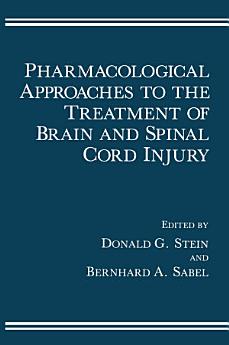Pharmacological Approaches to the Treatment of Brain and Spinal Cord Injury
Donald G. Stein · Bernhard A. Sabel
Dec 2012 · Springer Science & Business Media
Ebook
386
Pages
reportRatings and reviews aren’t verified Learn More
About this ebook
Although there are over 400,000 people each year in the United States alone who suffer from traumatic injury to the central nervous system (CNS), no phar macological treatment is currently available. Considering the enormity of the problem in terms of human tragedy as well as the economic burden to families and societies alike, it is surprising that so little effort is being made to develop treatments for these disorders. Although no one can become inured to the victims of brain or spinal cord injuries, one reason that insufficient time and effort have been devoted to research on recovery is that it is a generally held medical belief that nervous system injuries are simply not amenable to treatment. At best, current therapies are aimed at providing symptomatic relief or focus on re habilitative measures and the teaching of alternative behavioral strategies to help patients cope with their impairments, with only marginal results in many cases. Only within the last decade have neuroscientists begun to make serious inroads into understanding and examining the inherent "plasticity" found in the adult CNS. Ten years or so ago, very few researchers or clinicians would have thought that damaged central neurons could sprout new terminals or that intact nerve fibers in a damaged pathway could proliferate to replace inputs from neurons that died as a result of injury.
Rate this ebook
Tell us what you think.
Reading information
Smartphones and tablets
Install the Google Play Books app for Android and iPad/iPhone. It syncs automatically with your account and allows you to read online or offline wherever you are.
Laptops and computers
You can listen to audiobooks purchased on Google Play using your computer's web browser.
eReaders and other devices
To read on e-ink devices like Kobo eReaders, you'll need to download a file and transfer it to your device. Follow the detailed Help Center instructions to transfer the files to supported eReaders.




